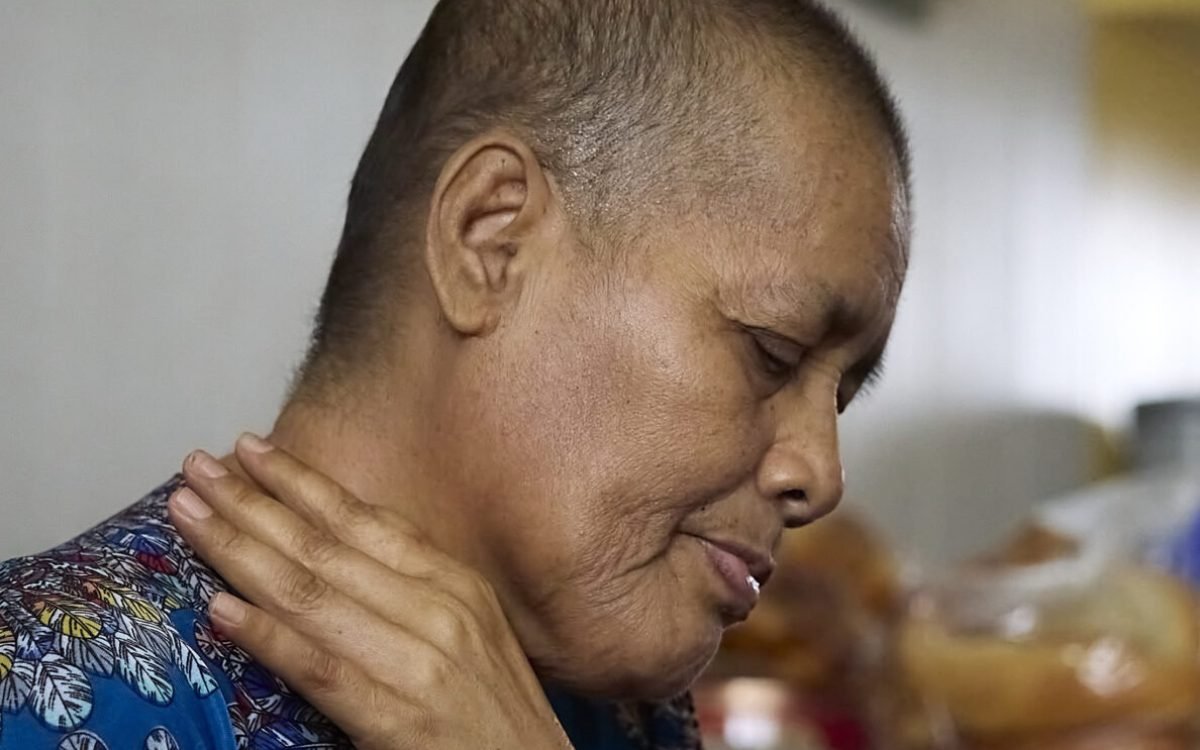When 64-year-old Ermina George discovered a lump in her right breast, she didn’t immediately rush to the doctor. Working as a custodian at Ala Moana Center, Ermina was focused on supporting her five adult children and her husband, who was preparing to become a lay minister. Like many Micronesian women in Hawaiʻi, she placed her family’s needs above her own health.
But within weeks, the lump grew more painful. By the time Ermina sought medical attention, she was diagnosed with stage 3 breast cancer. It had already spread beyond her breast.
Her story reflects a critical public health issue in Hawaiʻi — Micronesian women are being diagnosed with breast cancer too late, often due to systemic barriers, cultural responsibilities, and a lack of targeted outreach.
A Silent Crisis in Hawaiʻi’s Healthcare System
While breast cancer screening is widely available in Hawaiʻi, Micronesian women are among the least likely to receive regular mammograms. According to data from health research institutions and on-the-ground community reports, many women in this group are first diagnosed when the cancer is already advanced — significantly reducing survival rates.
This issue is not due to a lack of intelligence or concern, but rather a combination of cultural values, socioeconomic hurdles, and institutional gaps.
Understanding the Barriers
1. Cultural Expectations and Prioritizing Family
Micronesian women often prioritize family and community obligations over their own health. In many cases, personal medical concerns are postponed or ignored if they conflict with caregiving responsibilities. This deep-rooted cultural value, while honorable, can delay early detection.
2. Language and Communication Challenges
Medical systems in Hawaiʻi still lack adequate language support for Pacific Islander communities. Many Micronesian women do not receive breast cancer education in their native languages — such as Chuukese, Pohnpeian, or Marshallese — leading to confusion about the purpose, process, and importance of screening.
3. Limited Trust in Healthcare Institutions
There is also a historical mistrust between Micronesian communities and Western healthcare systems. This is compounded by experiences of discrimination, lack of representation among healthcare staff, and bureaucratic barriers such as unclear insurance processes.
4. Logistical and Financial Constraints
Even though free mammograms are available through programs like the Breast and Cervical Cancer Control Program (BCCCP), many women are unaware of these services or find them difficult to access due to transportation issues, work schedules, or child care responsibilities.
What Works: Community-Based Health Interventions
A breakthrough came in 2006 when researchers in Hawaiʻi launched a pilot outreach initiative that employed Micronesian lay health educators to deliver breast cancer education and navigation support. These women spoke the language, understood the culture, and were trusted by the community.
The results were dramatic: within six months, mammogram participation among women over 40 jumped from 18% to 90%.
This community-based approach — grounded in trust, cultural sensitivity, and in-language communication — remains one of the most effective strategies for increasing screening rates and reducing late-stage diagnoses.
The Human Cost of Delay
For Ermina George, delayed screening came at a high cost. Her treatment plan now includes chemotherapy and a mastectomy — an emotional and physical burden that could have been less severe if the cancer was caught earlier.
Her story is not unique. Many Micronesian women face similar experiences, suffering in silence until their symptoms become too serious to ignore. Their late-stage diagnoses often result in longer, more invasive treatments and reduced chances of survival.
A Call for Change
Reducing breast cancer disparities in Hawaiʻi requires a multi-layered strategy that addresses both systemic gaps and cultural realities:
Culturally Tailored Outreach: Public health campaigns must include translated materials, trusted messengers, and culturally respectful messaging that prioritizes women’s health alongside family responsibility. Expanded Lay Health Educator Programs: Empowering community members to lead awareness efforts continues to be one of the most successful and scalable approaches. Better Integration into Health Systems: Hospitals and clinics must improve interpreter services, remove insurance-related confusion, and ensure inclusive, respectful care that meets the needs of all ethnic groups. Mobile Screening Units: Bringing services directly to communities — including churches, schools, and local events — can help eliminate transportation and access barriers.
Looking Forward
Ermina has become an advocate, encouraging other Micronesian women to get screened and not delay care. “If I had known how fast it could grow, I would have gone sooner,” she said. Her bravery in sharing her story is a wake-up call for healthcare providers, policymakers, and community leaders.
Early detection saves lives. But for it to work, everyone must have equal access to the knowledge, support, and services that make early detection possible. In Hawaiʻi, the time to act is now — to ensure no woman has to choose between her family and her own life.
Let’s shift the narrative — from late-stage survival to early-stage prevention — by putting community voices like Ermina’s at the center of public health.






